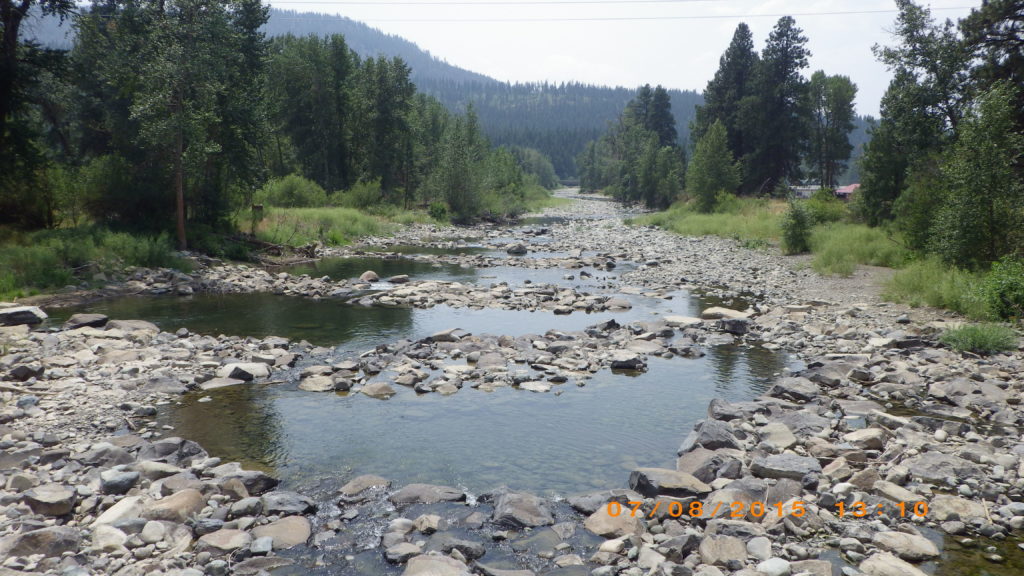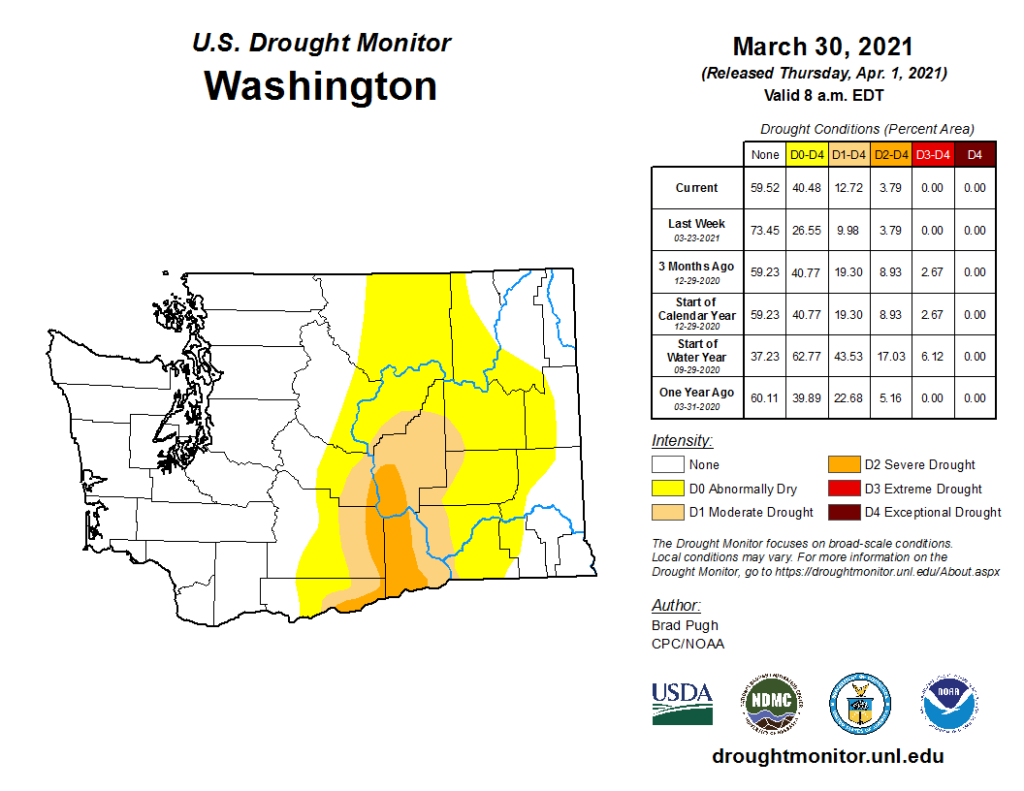Author: Aiman Shahpurwala, WWT Data Analyst
Climate change is putting more and more stress on Washington’s precious freshwater supply. Warmer temperatures in the winter and spring can decrease mountain snowpack accumulation and increase runoff and melting events leaving little water behind for the critical months of August to November when vulnerable salmon populations swim upstream to spawn. The low water supply conditions can also create difficulties for producers and agriculturalists who need freshwater to irrigate their fields, and many other sectors and services in Washington that rely on abundant freshwater.
The Washington State Department of Ecology monitors developing drought conditions each year. They use information such as snow pack accumulation, precipitation, temperature, and historic and current weather patterns to assess drought conditions statewide. If the state determines drought conditions are developing they may issue a drought advisory for the specific watersheds affected. If drought conditions are widespread and significant economic, environmental, or social impacts are expected, the state will issue a drought declaration order signed by the governor. This will allow the state to initiate emergency response funding to try to mitigate for impacts. 2015 was the most severe drought Washington has seen in recent history where Washington experienced a record low snowpack and the state legislature approved $16 million for drought relief.

One way the state monitors impacts of drought on various sectors throughout the state is by using the Drought Impact Reporter (DIR) hosted by the National Drought Mitigation Center. The DIR is a nationwide database that keeps all records and reports of drought in the United States. In most states, anyone who is 18 years or older is able to submit impacts of drought-related conditions to the database. All submitted reports become a part of a critical permanent public record as they inform state and federal agencies and help guide drought mitigation efforts and response.

The Northwest River Forecast Center has forecast normal or above normal water supply conditions for most of Washington from April through September this year. However, as of March 30, 2021, abnormally dry to severe drought conditions are being observed in some central and eastern parts of the state (see Figure 1). While the outlook for the 2021 summer season is generally good, conditions can change without much warning, and drought conditions can quickly develop. Therefore it is important for both state officials and the public to closely monitor conditions particularly as summer approaches and demand on freshwater resources for both environmental and human needs is at its greatest. Washington residents can engage in helping to preserve our precious freshwater by reporting any impacts of drought they might be experiencing to the DIR here. More information on reporting impacts of drought to the state can be found on a helpful factsheet published by the State of Washington here.
